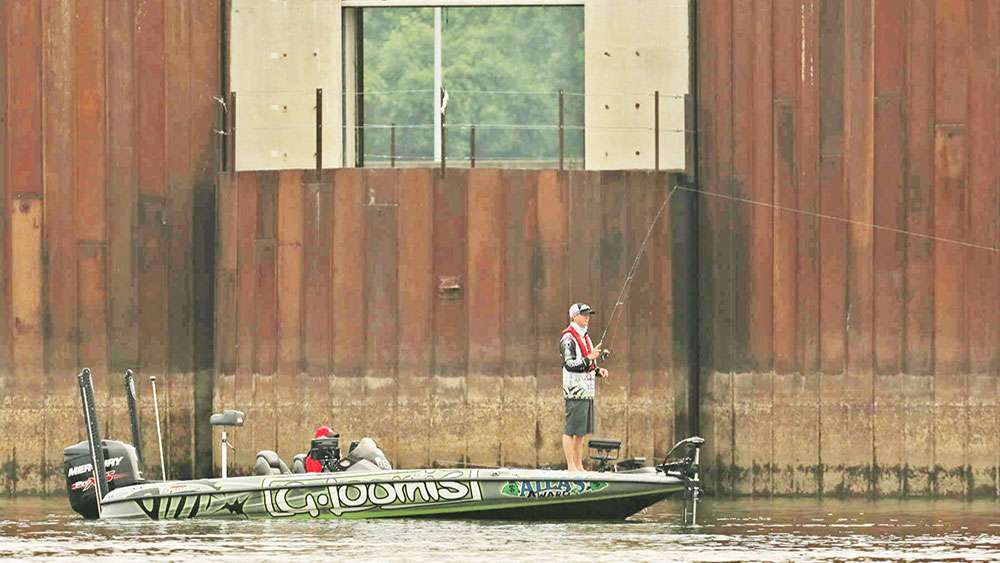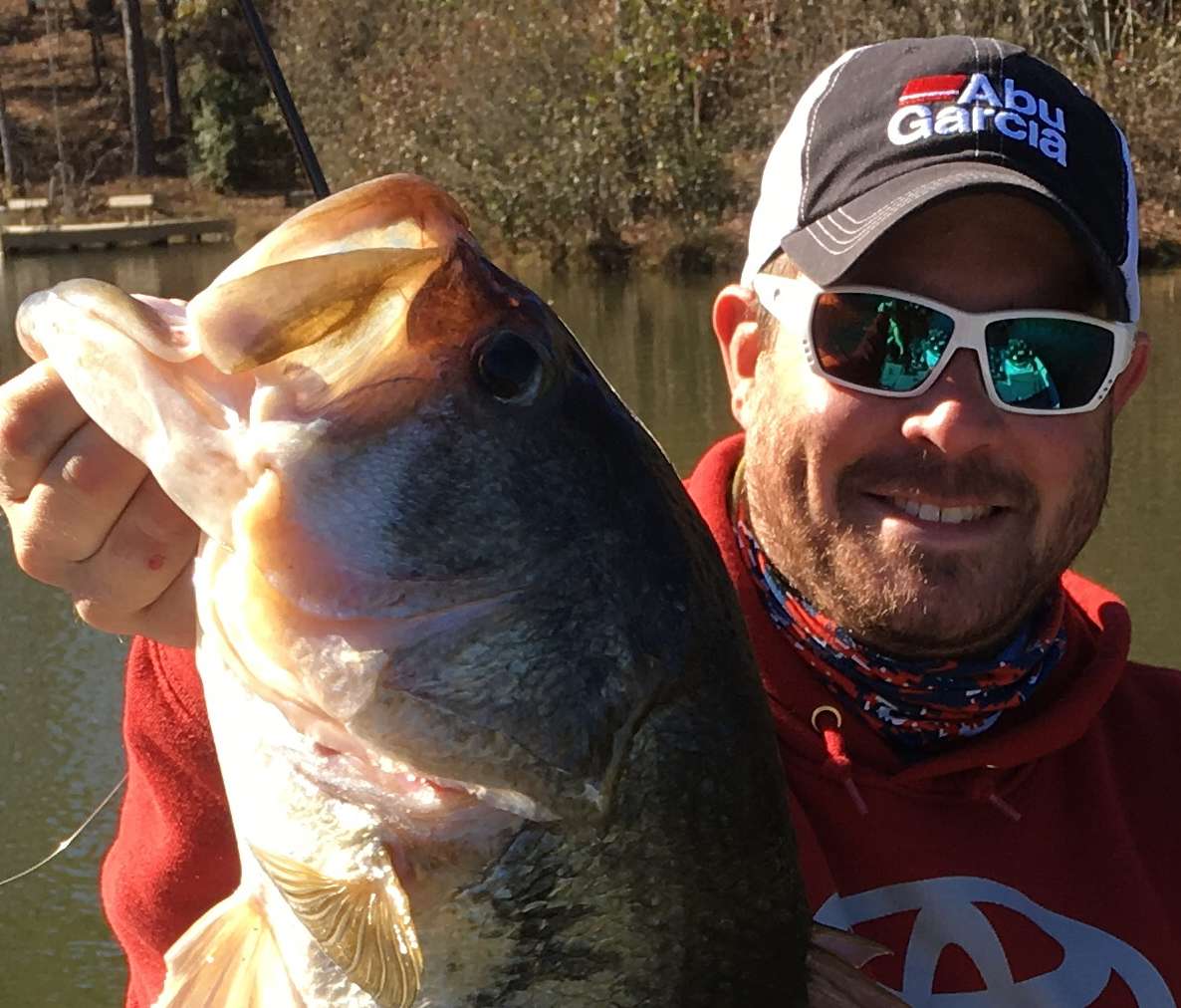
Editor’s note: This is the first in a series of fishing solutions from Shimano. Coming up, Summer Solutions and Fall Solutions. Enjoy!
Spring fishing is often considered the best bite of the year. But, when things get tough early in the season, few would disagree that it can get especially difficult. While there are solutions to finding bass when the water gets nasty, there is not a perfect answer that will work on every fishery every day. But, you can catch them if you know where to start.
What stumps many springtime anglers? High, dirty and cold water. Finding active fish under those conditions is a difficult task, and one that must be overcome if a tournament trophy and a paycheck are on the line.
It’s also worth noting that what is happening right now in central Florida is vastly different than what is happening in Tennessee, or even the upper Midwest. However, just about anywhere bass swim, dirty- and cold-water conditions are common during the spring.
And, nobody wants to sit at home.
Getting started
The key to unlocking productive tactics and techniques during tough conditions: Time on the water. Most of us, however, are bound by obligations to family and career that simply don’t allow for four to five days per week of fishing. That makes it critical to tap into existing information created by anglers who already understand how to catch bass under those specific conditions.
The second most important factor is being able to rely on your gear. With limited time on the water, the last thing you want to worry about is whether or not your rods and reels will hold up. As dedicated anglers, we spend a great deal of our income on an extensive fishing arsenal simply to have the confidence needed to fish adequately, as time allows. Having the right gear on-hand will greatly increase your productivity—even when the water is high, stained and cold.
Pro insight
Who better to learn from than a professional angler? One who earns his living by catching bass spring through fall, regardless of the water conditions? Kalamazoo, Mich., native, Jonathon VanDam lives in an area of the country where weather extremes are a part of life. The summer months are hot and muggy, while winter ushers in bitter cold and iced-over lakes. As soon as that ice melts, it’s time to launch the boat and catch cold-water bass.
The young pro is no rookie. Jonathon VanDam certainly took after his superstar uncle, Kevin VanDam, but he doesn’t want to fish in his uncle’s shadow. JVD is starting his sixth year as a full-time touring Elite Series angler having fished 66 B.A.S.S. tournaments leading into the 2016 season, one of which was a big victory at Green Bay in 2012, and two Bassmaster Classic appearances.
“Cold water is the first obstacle that an angler faces during the spring,” said VanDam. “It’s the time of year when the weather can be tough to forecast, and the success most anglers experience during early spring largely depends on having ideal conditions. If winter is hanging on later in the season it’s easy to assume that you’ll be faced with cold water. To me, that’s the toughest springtime condition to overcome. To complicate the issue, early in the year cold water is typically accompanied by substantial amounts of runoff due to spring rains, which really muddies up the water.”

First stop
Locating the fish is the first step to catching them.
VanDam explained that when in a river or reservoir situation, he likes to avoid the current. He prefers to get off of the main river channel and focus on the creek arms, bays and backwaters.
“The moving water is going to stay colder longer, and that means fish activity will be lower in current than what you’ll find back in the creeks and bays,” the Shimano/G. Loomis pro said. “I’ve caught a lot of fish along riprap and rocks in shallow water. Rocks warm up the quickest, and that attracts all levels of the food chain.”
He said in most cases locating rock is the first place to start. He likes riprap banks because of how well they retain heat, even if it’s only a slight difference—one to two degrees warmer during the spring can provide holding power for the fish.
“When the water is cold in the spring, and even dirty, I will start my search in the back half of the creeks,” he said. “The water there will be the most stable. The backs of creeks and the mouths, where it meets up with the main lake, undergo changes the soonest. By the time that change has impacted the central portions of the creek, the fish have already adapted.”
From there, VanDam will move back into the creek until he has contacted fish and settled into a pattern. He said if riprap and rocky shorelines are situated halfway back into the creeks, there will be fish positioned nearby.
Presentation preference
“I prefer the finesse approach this time of year,” he continued. “Sometimes that means small baits and subtle profiles, but more than anything it means baits that move slowly. I like jigs worked along bottom, and especially a jerkbait that I can retrieve painfully slow. But, even in the midst of working a lure slowly, it’s important to cover water looking for active fish.”
VanDam acknowledges that there are times for large and flashy baits when the water conditions are challenging. However, when the water is cold the bass are more likely to respond to a slower presentation, and to effectively fish with the right baits, it takes the right equipment.
“Whether I’m fishing with a small jig or a jerkbait, the rod and reel will basically stay the same,” he explained. “I like a G. Loomis E6X 852S 7-foot, 1-inch spinning rod matched with a Shimano Stradic 2500FK loaded with 8-pound fluorocarbon. That combination works very well for both small jigs and a jerkbait.
“Most anglers don’t choose to use a spinning outfit in this situation, and there are times when I may pick up a baitcaster, too. However, whether you realize it or not, you automatically fish slower with a spinning rod. Think about it, most of the presentations that bass anglers naturally pair up with spinning tackle are presentations that are most productive when retrieved slowly.”
Finesse presentations that typically require light tackle often take a beating. For example: If a big bass hits a suspending jerkbait when it’s at rest, the angler must quickly pick up slack line and set the hook with authority. The frame of the reel will absorb the bulk of that shock, but with Shimano’s new Hagane frame design concept behind the Stradic FK spinning reels, you can rest assured that it will stand the test of time. To learn more about the Hagane technology, visit this link.

The secret
“I’ve found that the fish are pretty easy to catch once you’ve located them,” he said. “The tough part is maintaining an open mind and not letting the conditions beat you before you even launch your boat. The secret is to force yourself to slow down and concentrate on likely fish-holding structural elements—in this case rocks. The bass are still going to do their thing, regardless of the water conditions. You just might have to work harder at getting their attention.”
In closing, VanDam said that that once you have identified a pattern, it’s pretty easy to replicate it across the lake. Match up the key conditions in similar locations with the right gear, and you’ll find a good limit of fish.
There’s no reason to choose to stay at home when the water conditions are iffy. You just have to look in different places than you might if conditions were easy. Now you have the right pieces of the puzzle, the key is to get out there, experiment and put your newfound knowledge to work. And that’s the fun part.

